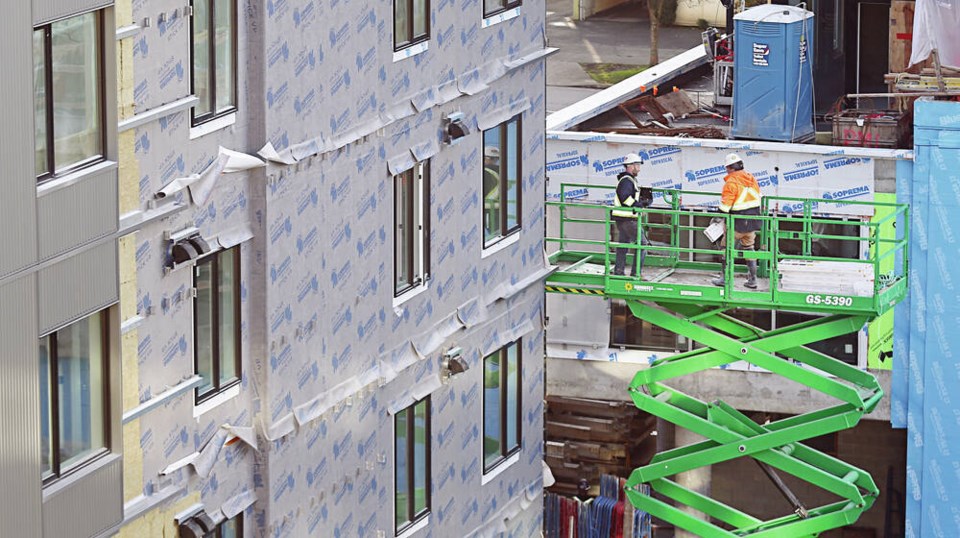Greater Victoria home builders might be maintaining a strong building pace, but it’s unlikely to keep up with demand, say industry experts.
Figures released Friday by Canada Mortgage and Housing Corporation show the region saw 4,348 new homes started through the first 11 months of the year, slightly down from the 4,517 started in the same period last year.
And while the numbers suggest anyone able to frame a home or pour concrete foundations is busy, it’s unlikely the region will set any records this year.
The record for new home starts was set in 2021 with 4,809, replacing the previous record of 4,439 set in 1976.
Casey Edge, executive director of the Victoria Residential Builders Association, said not only is the pace of building not keeping up with demand, it’s not even keeping up with building in the 1970s.
“In the 1970s, our population was half of what it is today, so relative to population, these are not really record housing starts,” he said. “We’re actually down 40 per cent relative to the seventies.”
There are currently 8,021 homes under construction in the region, the vast majority of them — 7,095 — either condominiums or rental apartments, according to CMHC.
In its spring 2022 housing outlook, the housing corporation warned the region was falling behind the demand for housing, noting it was already building at capacity as builders contended with supply constraints, rising material costs and an acute labour shortage.
Edge said with increased immigration, migration to the west from across the country, and the millennial generation starting families, demand is only going to increase, and lack of supply will push up housing prices.
While CMHC’s numbers show housing starts in the region are down about four per cent, housing starts in the city of Victoria are down 51 per cent to 839 so far this year.
Edge blamed the drop-off on factors including increasing costs and city-imposed fees, such as the added cost to deconstruct houses in Victoria, rising development cost charges to cover infrastructure, and the amount of time it takes for projects to make it through the system.
“The City of Victoria and Saanich are notorious for having the most challenging approval processes and some of the highest costs,” he said. “If builders aren’t starting a particular project, maybe the costs and the approval process is too costly and challenging.”
Brendon Ogmundson, chief economist with the B.C. Real Estate Association, said while there has been a significant amount of new construction in Victoria over the past few years, what really matters in terms of keeping price-growth moderate is how many new units are being completed and how many units are currently available for sale.
“The inventory of homes for sale in the Greater Victoria area is only about half of what it was a decade ago, and demand for housing is much higher due to faster population growth, demographic pressures from the millennial generation aging into their prime household forming years, and migration of retirees to the Island,” he said.
Ogmundson said sales in Victoria are weak due to high mortgage rates, but he expects significant pent-up demand to be “unleashed” if interest rates fall as expected over the next year.
To tackle that expected demand, Victoria — and the rest of the province — will need to see a significant increase in new home completions, he said.
Edge said new provincial regulations like the Housing Statutes Amendment Act that allows single-family lots to be replaced by denser housing forms such as houseplexes should help, but municipalities still have levers to slow down development.
“We have to keep an eye on fees like [development cost charges] and community amenity contributions, all of those things that could impede more housing,” he said.
Edge said some communities that have traditionally been reluctant to densify their housing stock and allow infill, such as Oak Bay, North Saanich and Metchosin, might use those kinds of fees to ensure it’s not economical for anyone to develop plots of land.



